Galaxies glow purple in the Webb Telescope’s new X-ray vision
The collaboration between Chandra X-ray Observatory and Webb telescope could be shape of things to come in astronomy
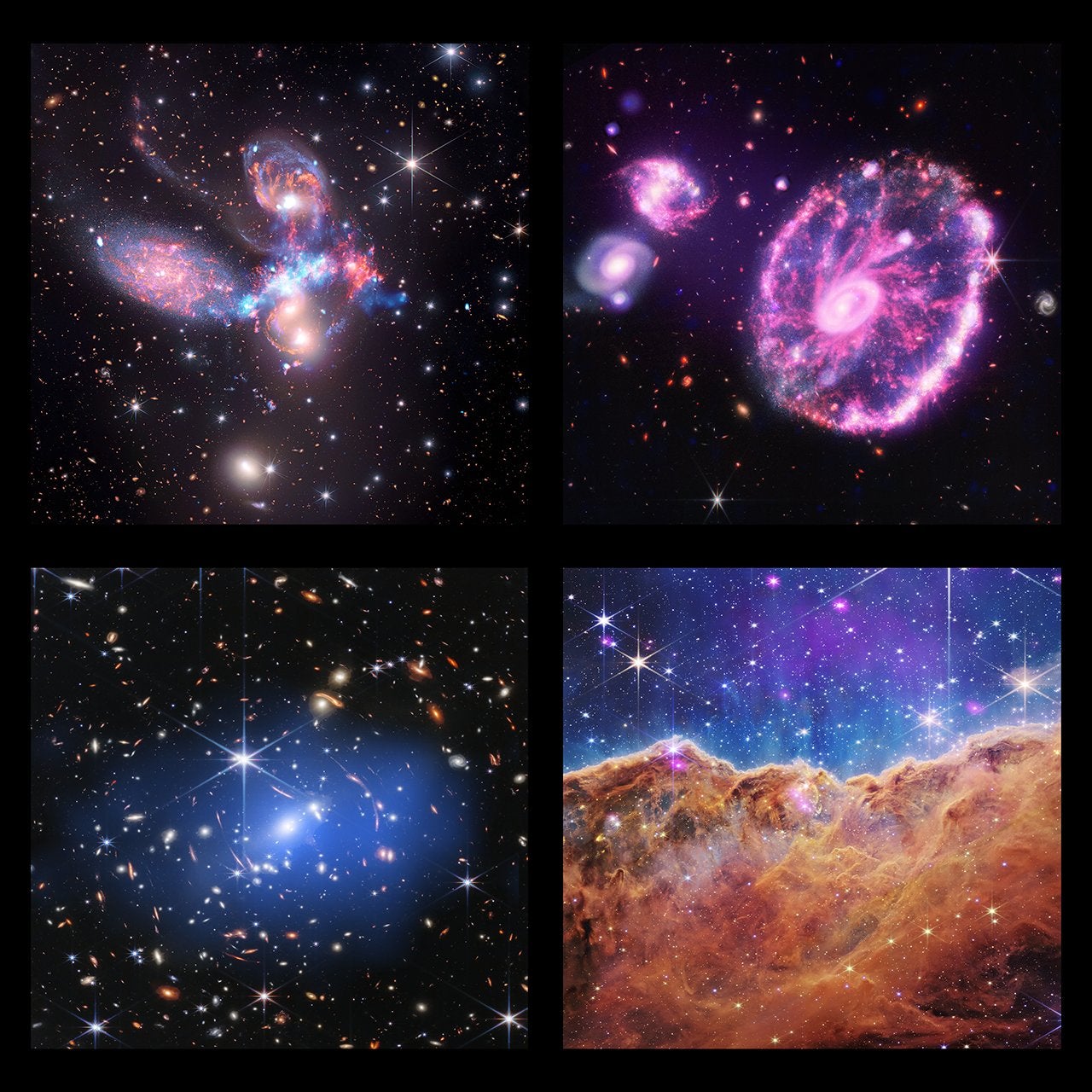
The James Webb Space Telescope is attuned only to infrared light, but that doesn’t mean it can’t see the broader sky with a little help from its friends.
Chandra X-ray Observatory is Nasa’s X-ray light space telescope, and scientists have now combined its X-ray observations of some of the first, iconic images taken by the Webb Telescope. The results are an infusion of luminous purples and blues in the already polychromatic Webb images, and an enhancement of detail that is helping scientists to learn more about the deep space objects that are the subjects of both space telescopes.
Nasa recently released images combining Webb and Chandra observations of Stephan’s Quintet, the Cartwheel galaxy, the Carina Nebula, and the galaxy cluster SMACS J0723. The Chandra Observatory account on the social media platform Twitter shared the images of all four on Tuesday.
Stephan’s Quintet is a collection of four galaxies in close proximity about 290 million light years from Earth, and a fifth at a different distance that appears to join them in their gravity-driven dance. The group of galaxies was among the first Webb images released to the public on 14 July.
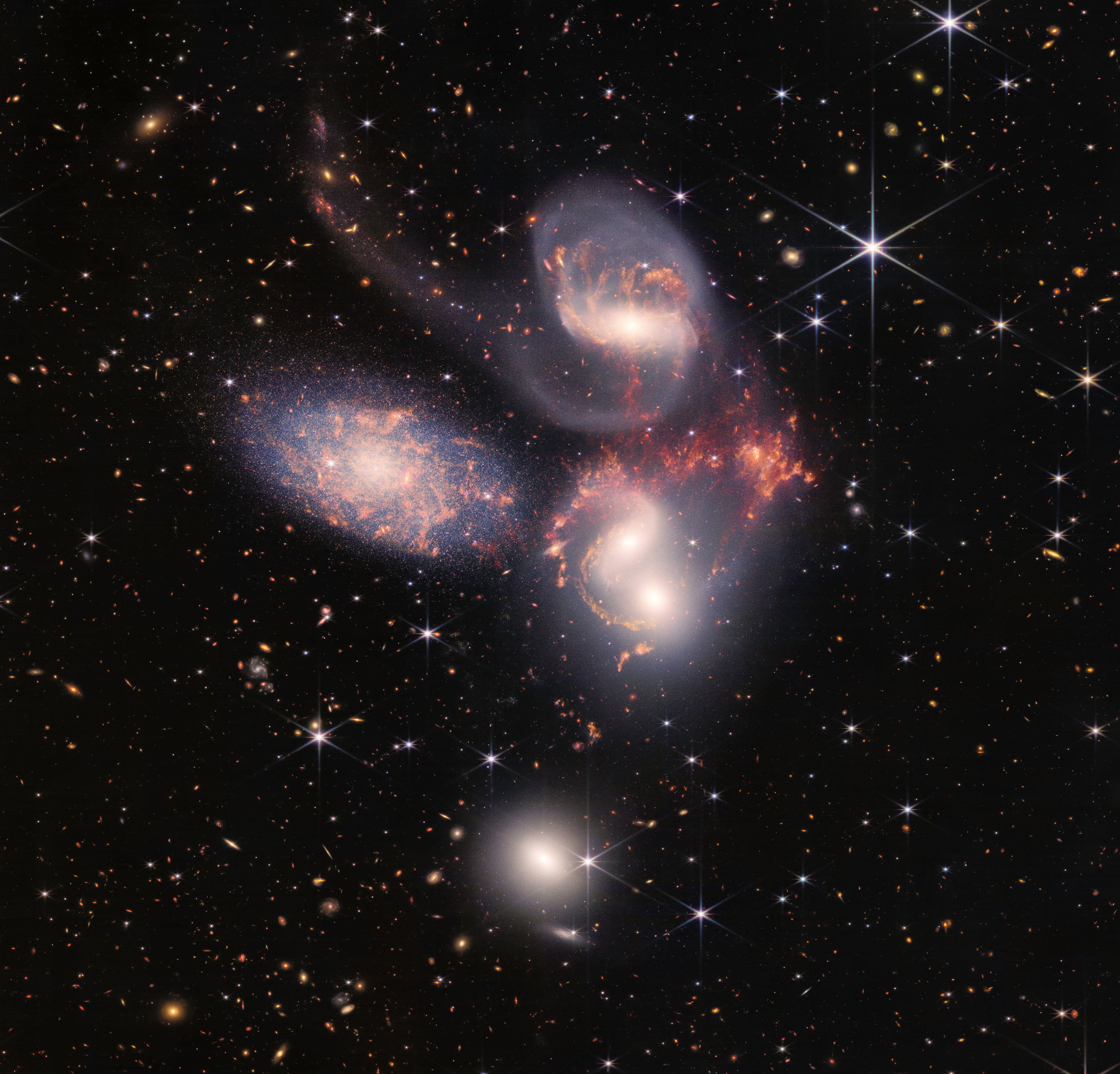
The addition of Chandra’s X-ray vision revealed a bright diagonal path of blue amidst the galaxies, and blue bands around the spiral arms of the galaxies, revealing areas of star formation and violent interaction between them, according to a Chandra Observatory blog post.

“The Chandra data (light blue) of this system has uncovered a shock wave that heats gas to tens of millions of degrees, as one of the galaxies passes through the others at speeds of around 2 million miles per hour,” the post reads.
The combined image of the Cartwheel Galaxy, some 500 million light years from Earth, glows in luminous purple thanks to the addition of Chandra’s X-ray sight, which highlights, “superheated gas, individual exploded stars, and neutron stars and black holes pulling material from companion stars,” according to the Chandra observatory website.
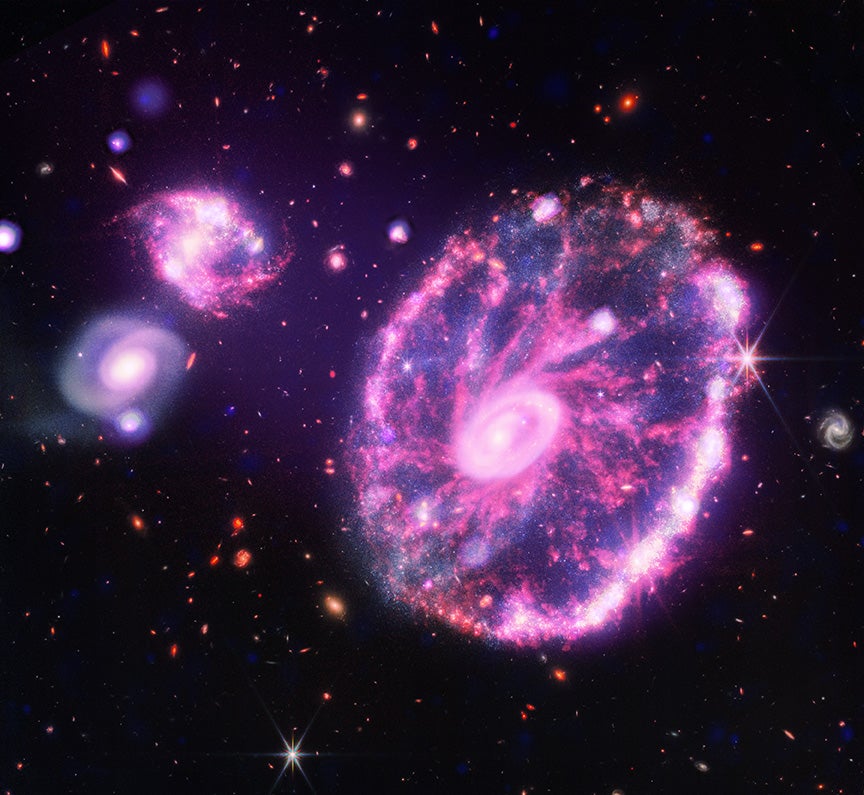
SMACS J0723 is a cluster of galaxies more than 4 billion light years from Earth, and was one of the first Webb images released in July. The combined image shows a blue aura around the cluster, a vast reservoir of gas seen glowing in X-ray light by the Chandra Observatory.
“In this image, the Chandra data (blue) reveals gas with temperatures of tens of millions of degrees, possessing a total mass of about 100 trillion times that of the Sun, several times higher than the mass of all the galaxies in the cluster,” the Chandra website reads.
The fourth composite image is one of the most stunning of the first Webb images to be released, the “cosmic cliffs” of the Carina Nebula, found 7,600 light years from Earth.
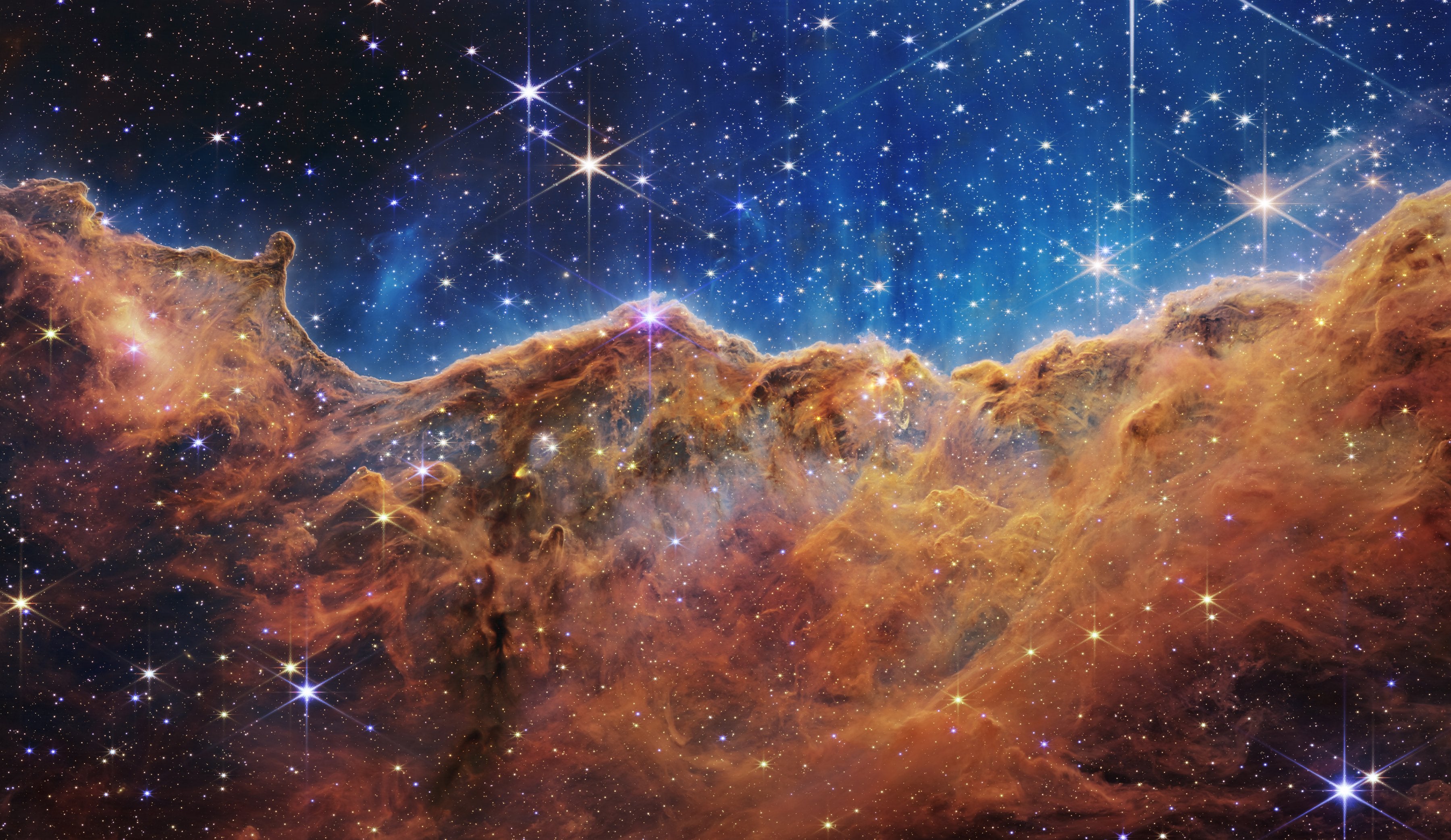
The new Webb-Chandra composite image highlights younger stars in the cosmic cliffs, which glow brighter in X-ray light, according to the Chandra Observatory website.
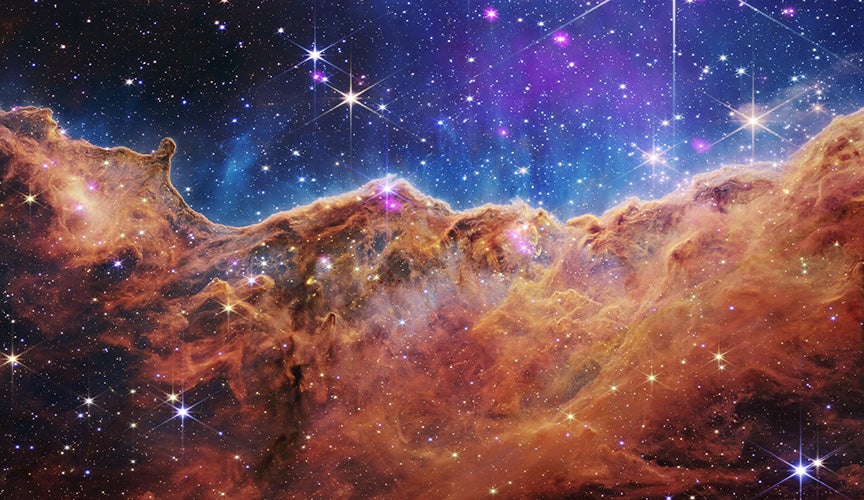
The new images are not the only Webb telescope team up. The Hubble Space Telescope and Webb Telescope teams recently combined forces to create a composite image of a distant galaxy pair using Webb’s infrared vision and the ultraviolet light sensitivities of the venerable Hubble.
Webb was never meant to explore the cosmos solo, according to the Chandra Observatory website, and these team-ups with Chandra and Hubble are “underscoring how the power of any of these telescopes is only enhanced when joined with others.”
Join our commenting forum
Join thought-provoking conversations, follow other Independent readers and see their replies
Comments
Bookmark popover
Removed from bookmarks